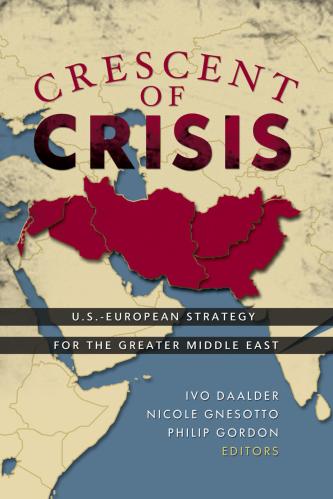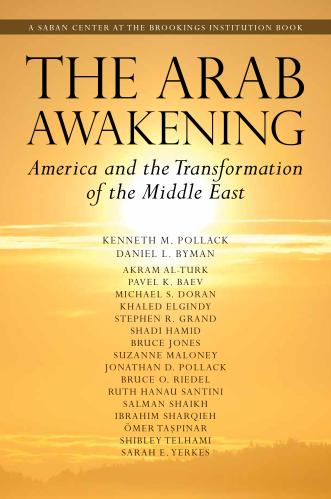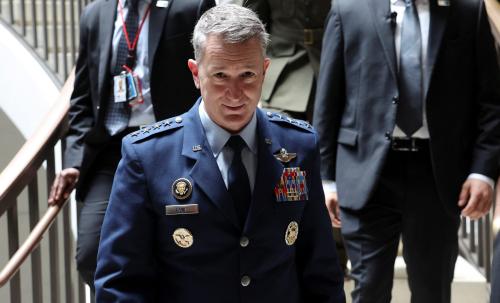On December 28, 2017, protests began in Mashhad, Iran’s second largest city, and quickly spread to other cities throughout the country. Demonstrators have expressed a variety of grievances, but most seem to be about economic conditions such as rising prices, poverty, and unemployment. Some of the rhetoric is critical of the Islamic Republic and its leadership.
To understand the upheaval in Iran and how the international community can respond, the Center for Middle East Policy at Brookings hosted a discussion today featuring journalist and filmmaker Maziar Bahari, author of “Then They Came for Me,” and Suzanne Maloney, deputy director of Foreign Policy at Brookings and a Brookings senior fellow. Susan Glasser, chief international affairs columnist at Politico, moderated the discussion.
Below are video highlights of the conversation. Visit the event’s web page for full video, audio, and a transcript.
WHAT IS HAPPENING IN IRAN?
Bahari summarized what has been happening since December 28, noting that there is “circumstantial evidence” that the first protest in Mashhad may have been organized by government hardliners to protest Iranian President Hassan Rouhani’s economic policies.
“So it’s a very confusing picture that we see coming out of Iran,” Bahari said, “but it shows that there is a fertile ground for protest.”
Maloney offered her analysis of the political context, focusing on the key differences with the massive “Green Movement” rallies that arose after the controversial election of Mahmoud Ahmadinejad in 2009. She noted that unlike in 2009, the current demonstrations lack “an obvious figurehead” and “obvious organization,” but that starting on December 28, a “contagion effect”—the extremely rapid spread of demonstrations to other cities—has been evident.
Bahari also called attention to the fact that the protests today do not have “a clear objective,” and that the Iranian government will play on peoples’ “fear of insecurity” in its response.
Maloney later explained that while the demonstrations are small relative to the Green Movement, if today’s protesters are part of the “base” of the constituency that gives the Iranian regime its legitimacy, and if that constituency feels angry and its members are “prepared to engage in violence and prepared to repudiate everything about the Islamic Republic,” then “it has got to be deeply unnerving” to the regime. Even if the protests die down, Maloney considered the government’s response: “What is going to be the next spark? How can it be anticipated? How can the security forces and the government try to forestall it?”
HOW DOES IRANIAN PRESIDENT ROUHANI FACTOR IN?
Hassan Rouhani was elected president of Iran in August 2013 (and reelected in 2017) and was considered a moderate in contrast to hardliners like outgoing president Ahmadinejad. Rouhani’s election offered the possibility of better ties with the West, and with them the potential for improved economic outcomes for Iranians. “Rouhani was the last best attempt to moderate the Islamic Republic,” Maloney said at the event today, but “ultimately he’s run up against the limits of what’s possible in the Islamic Republic.” Maloney discussed today’s protests in the context of expectations for reform and economic improvement under Rouhani, with particular attention to the nuclear deal.
THE U.S. RESPONSE TO IRANIAN PROTESTS (UNDER TRUMP AND OBAMA)
On New Year’s Eve and New Year’s Day, President Trump issued tweets offering support to the protestors, stating that “The [Iranian] people are finally getting wise as to how their money and wealth is being stolen and squandered on terrorism,” and that “The great Iranian people have been repressed for many years. They are hungry for food & for freedom.” Was the president’s rhetoric helpful to the protesters, or would it give the regime yet another opportunity to denounce U.S. involvement in its affairs? Bahari, who was a participant in the Green Movement, said that “I think [President Trump] handled it correctly,” and that although Trump is unpopular at home, Iranians “want to hear from the president of the United States.” Watch as Bahari explains what three things the U.S. government should do that would constitute an effective response:
(See also Suzanne Maloney’s recent “5 on 45” podcast episode, in which she, like Bahari, said that the U.S. government should lift the travel ban on Iranians as a measure of support.)
The event featured much discussion of the 2017/2018 protests in comparison to earlier periods of unrest in Iran, especially the 2009 Green Movement that erupted at the start of the Obama administration. President Obama and his foreign policy team, including Secretary of State Hillary Clinton, came under criticism for its muted response in the opening days of the movement, only sharpening their rhetoric as the Iranian government executed a violent crackdown. Maloney said that she “defended the Obama administration at the time” due to the context—the burgeoning nuclear crisis with Iran and the way any U.S. support for the demonstrators could be used against them by Tehran—but acknowledged that the “do no harm” approach didn’t work.
The lesson learned, Maloney said, “is we should never stay on the sidelines, it’s the obligation of the United States … to speak on behalf of those who are asking for a better life and to condemn violence against them. And I think while I would prefer someone script President Trump’s tweets for him in a way that might be a little bit more persuasive, I think it’s the right instinct to be out in public on this.”
The Brookings Institution is committed to quality, independence, and impact.
We are supported by a diverse array of funders. In line with our values and policies, each Brookings publication represents the sole views of its author(s).








Commentary
VIDEO: The protests in Iran and the US response
January 5, 2018